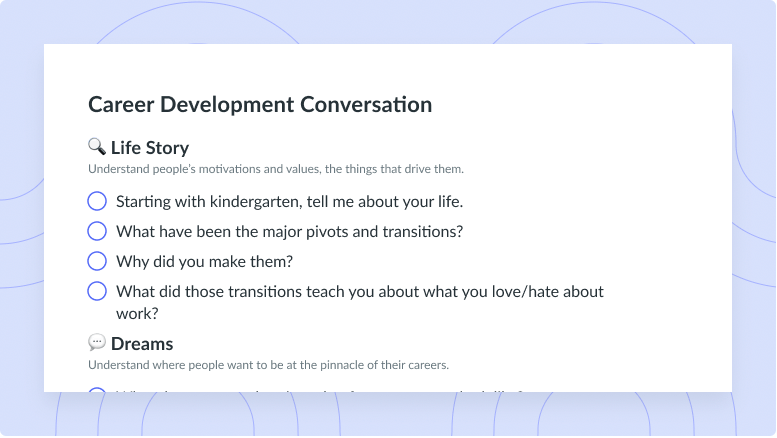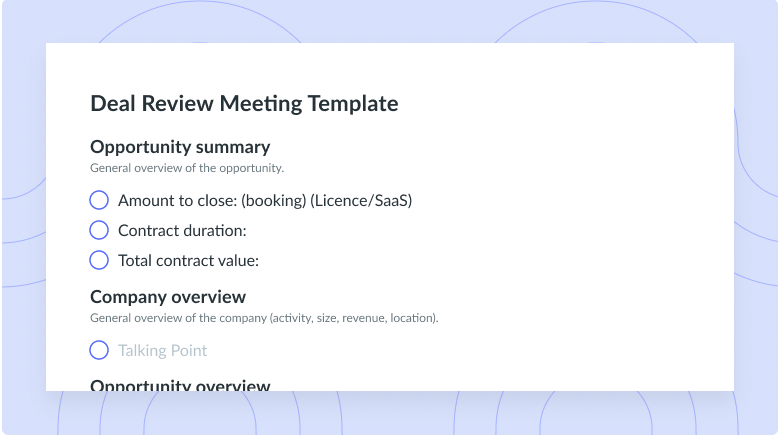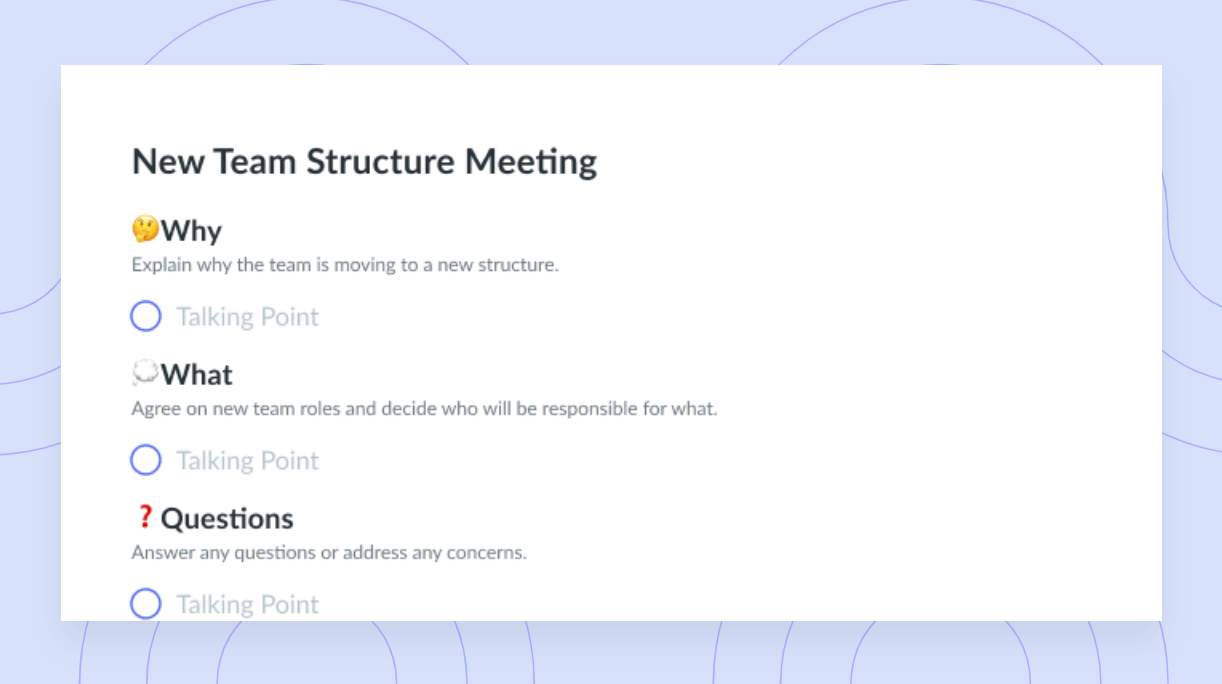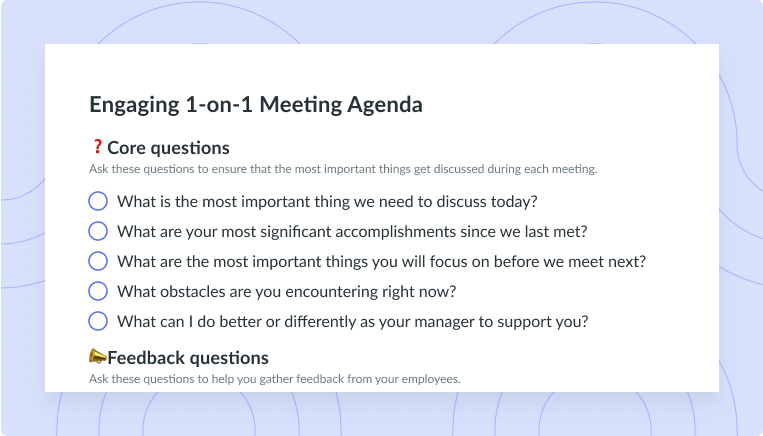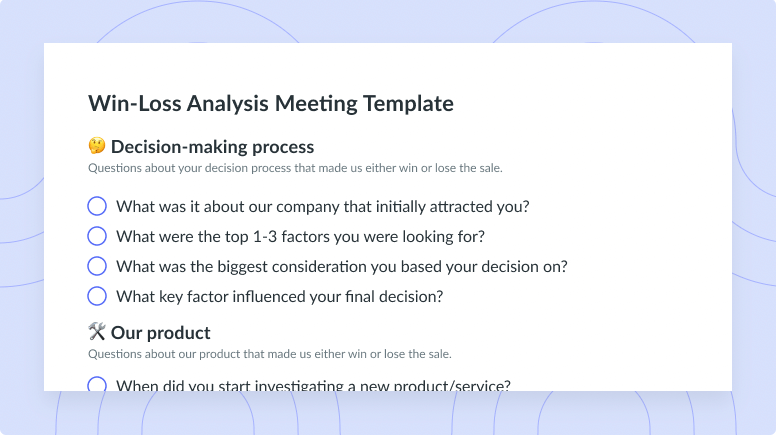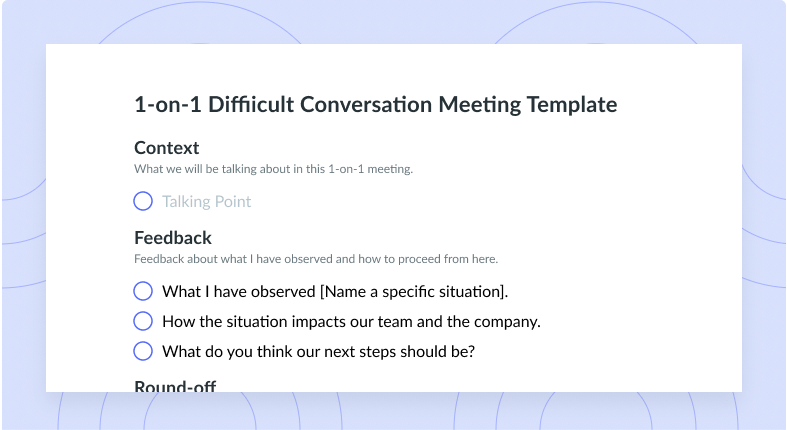How to Handle Difficult Conversations at Work (8-Step Framework)
Difficult confrontations and conversations at work can be pretty hard to navigate. For that reason, we’ve created an 8-step framework to help put your mind at ease before approaching a difficult conversation.
Difficult conversations at work are something that most managers and employees absolutely dread. The truth is though when the proper planning is put in place, tough conversations aren’t actually as difficult as you may have initially thought. It’s important to consider the other person’s point of view and that you try to fully understand where they are coming from. Of course, the same works vice versa.
That said, there are many things to consider before you sit down to have that chat that you’ve been putting off. Because a challenging conversation can be uncomfortable for many people, this article covers 8 effective tips for difficult conversations at work, as well as examples of difficult conversations and some tips to best handle them.
8 Tips to handle difficult conversations at work
- Prepare for the conversation
- Change your mindset
- Find the right setting
- Stick to the facts
- Explain the impact
- Listen actively
- Find a solution together
- Document any decisions
1 Prepare for the conversation
Before you even make it known that you’d like to have a conversation with someone at work, it’s important that you plan and prepare for the conversation. In a recent article by Forbes, they explain why it’s important to gather your thoughts before a tough conversation:
“This is not a conversation you want to have in the spur of the moment. You want to think of what you’re going to say, as well as anticipate how the other person might react. Think of the questions they might ask and have answers prepared. The more prepared you are, the easier it will be to stay even-tempered and not get flustered, and therefore deliver a more solid critique.”
2 Change your mindset
If you’re upset, make sure that you wait to have the difficult conversation, once you’ve mellowed out. Sometimes, when we’ve calmed down, we realize that the conversation might not need to be one that we dread so much. In an article by the Harvard Business Review, they explain how you can change your mindset before a challenging conversation:
“If you’re gearing up for a conversation you’ve labeled “difficult,” you’re more likely to feel nervous and upset about it beforehand. Instead, try “framing it in a positive, less binary”… For instance, you’re not giving negative performance feedback; you’re having a constructive conversation about development. You’re not telling your boss: no; you’re offering up an alternate solution. “A difficult conversation tends to go best when you think about it as just a normal conversation…”

Pro tip
Use a meeting management tool like Fellow to outline your thoughts and feedback to better prepare your difficult conversation into a thoughtful conversation.
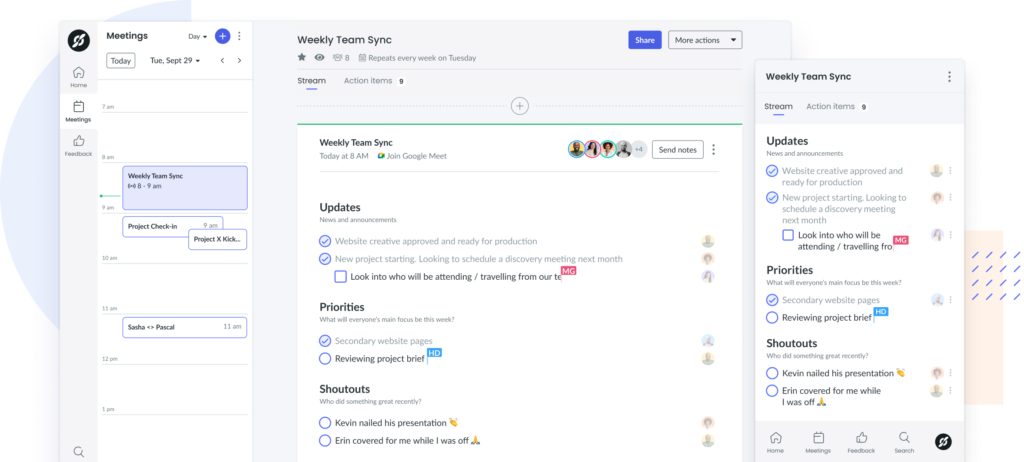
3 Find the right setting
Depending on your work environment, it’s likely that there’s an ideal, more private setting where you can have this discussion. It may make you feel more comfortable to have the difficult conversation in a space that doesn’t have as much foot traffic or as many windows so that the person you’re speaking with and yourself truly feel alone. Outside influences, noise, and distractions can take away from the discussion. You can also make this talk much more casual by grabbing a cup of coffee if you don’t feel the need for it to be so formal. This might actually help relieve some pressure that you’re feeling.
4 Stick to the facts
While we’re all entitled to our feelings, it’s best to keep these conversations based on facts alone. It’s helpful to try to separate what you know from how you feel. A great way to do this is to think about how the person on the receiving end might feel about the things you’d like to say to them. This will help you put your thoughts together as objectively as possible, as you eliminate any kinds of projections or assumptions. Another great way to do this is to think about what kind of advice you’d give to a friend in a similar position. Sticking to the facts can be especially helpful when it comes to having difficult conversations with employees, where you want to give some constructive feedback.
5 Explain the impact
It’s helpful to not only outline the behaviour or words that may not have sat well with you but to also explain their impact. Lara Hogan, author, public speaker, and coach for managers explains:
“Next though, you can describe the impact of the behavior. This is where you can share how you feel! When I first coach people on describing the impact of someone’s behavior, I often find myself saying, “but what’s the impact of that?” And then they’ll respond, and I’ll say, “but what’s the impact of that?” It takes a bit to get to the core thing—the most measurable impact of this behavior.
Example Impact: I have a hard time understanding what you mean in those emails. I often need to reply to your email with more questions to get clarification or more context, which adds time to the process.”
6 Listen actively
In these kinds of conversations, it’s really important that you keep an open mind so that you can listen to the other side of the story. Make sure that you are not so closed off that you’re not fully listening to what your manager or employee is explaining. Your thoughts and feelings are just as important as one another’s and it’s important to show respect to your co-worker by listening actively to what they have to say. Here, non-verbal communication such as good eye contact and nodding are important. You can also probe more questions if you’d like to better understand the other person’s perspective.
7 Find a solution together
While there may be some kind of disagreement between you and the person that you’re addressing, it’s important that you both try to conjure up a solution or a way to move forward together. In the same article by Forbes, they explain why it’s so important to create a plan together:
“Nothing is worse than delivering a critique and leaving it just at that. You’ll want to clearly explain the reason for the conversation, the specific critique, and then offer suggestions to improve. If you’re telling an employee that they aren’t getting a raise, explain why and let them know what they need to work on to make that raise a possibility. Even if the conversation is to fire an employee, you should still offer a suggestion that will help them improve in their next job.”
8Document any decisions and important takeaways
In order to conclude your difficult conversation effectively, it’s a good idea to document any decisions that have been made as well as important takeaways. In documenting this conversation and putting it on paper, you are holding both yourself and the other person involved accountable and responsible for whatever has been agreed upon. This way, should you need to (and we hope you don’t!), you can refer back to the documentation of the conversation, with specific numbers, examples, or other resources that may be helpful.
Examples of difficult conversations and tips to handle them
Manager to Employee
The most common type of difficult conversation with an employee tends to occur when a personality or working style clashes with the team and disrupts the productivity and efficiency of the workflow. What’s more, is that this makes other employees feel uncomfortable and on edge. Managers also need to confront an employee should they not be meeting expectations. This is where you can confront an employee in a performance review and discuss their poor performance through some constructive feedback. Other times, a manager may need to speak with their employee when an individual disagrees with a promotion or compensation decision. It’s important that managers lead these conversations with compassion and remain open-minded to the employee’s point of view. Listen actively and show the same respect to your employee that you would like to receive in return.
Employee to Manager
As an employee, often you need to speak to your manager as well. This happens when you don’t agree with your manager’s decision, when you feel overworked or sometimes, when you need to be out of the office for personal reasons. Make sure that your difficult conversation is planned well in advance and that you send your manager a calendar invite. This demonstrates professionalism and will signal to your manager that this conversation is important to you. If it’s a more formal conversation, you can even send a meeting agenda in advance so that your manager is aware of what you’d like to discuss.
Employee to Employee
Difficult conversations don’t always just happen between employees and managers. Sometimes, you’ll want to speak with one of your peers for one reason or another. This could be an instance where you are asking for help, whether it be personal or professional. An employee-to-employee tough conversation could also be in regards to dealing with a distracting or difficult co-worker whom you work with closely to gain some insight from someone you trust. Otherwise, it could be asking for advice on how to handle the stress of the job, or even learning how to set boundaries and say no. Try to approach this kind of conversation without any bias and to frame the information as objectively as possible.
Parting advice
While difficult conversations can be a little uncomfortable, often they alleviate a lot of stress and anxiety and only make for a healthier and happier work environment. Employee engagement is improved when there is a work culture that values open, honest, and direct communication. This is the kind of culture that creates a good team player and creates a better synergy in the office. Remember not to point quickly without hearing out the other person in the room and to try to understand where your coworker is coming from.









